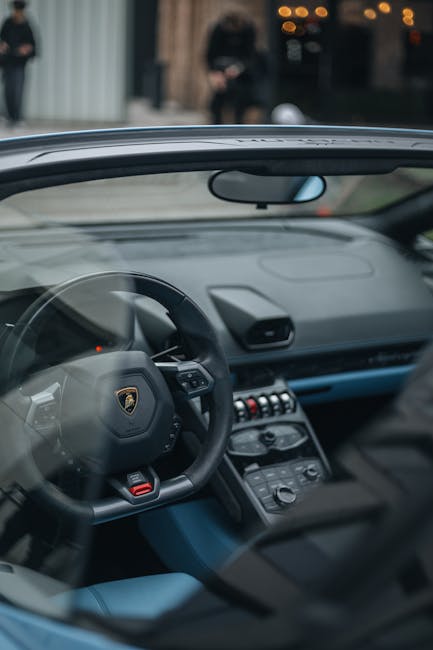Tesla launches limited Full Self-Driving in China to mixed reviews - Related to range, boost, launches, cost,, 20%
Here's how in-wheel motors could cut EV cost, boost range 20%

In-wheel motor maker Elaphe doesn't see issues with durability or unsprung mass.
"Vehicle-level" integration of tech could bring 20% cheaper vehicles, 20% efficiency boost.
Elaphe is targeting 95% efficiency on a battery-to-wheel basis by 2030.
If you took a quick look at the display stand for Slovenia’s Elaphe Propulsion Technologies at CES 2025 last month, you might have walked away with the message that the supplier of in-wheel motors has moved on from Aptera, Lightyear, and Lordstown and is pitching its tech to cars that are fast, exotic, and expensive.
That much is true—in the short term. Long-term, Elaphe has a grander global vision than just fitting into the performance picture.
In the meantime, it sees performance vehicles as the perfect venue for showing tech-savvy car buyers what in-wheel motors can do. At CES, Elaphe revealed a revised in-wheel motor design, called Sonic 1, that’s compatible with larger, track-ready brakes and high-performance vehicles.
In a rear-engine, rear-wheel-drive model, for instance, it could deliver “something extra,” as brand and marketing architect Iztok Franko put it, at the front wheels without redoing the architecture of the vehicle—as part of a hybrid performance upgrade.
Elaphe Sonic 1 in-wheel motor for performance cars. - CES 2025.
The Sonic 1 motors themselves, which it teases are likely to arrive in a production vehicle in 2026, can make up to 268 hp and 737 lb-ft each in their default form—designed to fit a 21-inch front wheel, as shown. And to take it to a scorching extreme, they’re being developed to fit up to 24-inch wheels, as Elaphe and its stand partner Italdesign teased in an updated Quintessenza supertruck concept, offering a hypothetical combined max of 1,600 kw (nearly 2,150 hp).
“So now we remove the obstacle of reengineering the whole vehicle, it’s easy to integrate, and you can upgrade the performance and upgrade the control of the car,” stated Franko.
In-wheel tech promises simplicity, efficiency.
If you compare it to an e-axle with an inboard motor, there are no additional mechanical losses, because it’s only one rotating part per motor. There are no additional bearings, gears, or added constant velocity joints, either.
It’s a good start to thinking about what in-wheel tech can do, and why it’s been popular for some vehicle types, like very large trucks and buses. But it’s only scratching the surface for what Elaphe and the few other companies see as a bright future applying the tech to passenger vehicles.
Green Car Reports caught up with Elaphe chief technology officer Gorazd Gotovac at CES about how its technology is evolving and found a corporation that sees in-wheel tech as a key part in the long-term future of the car.
over many years and iterations, the organization has worked to fine-tune the design through inverter control and management of second-order effects in the physics of the magnetic field. Partly through that it’s achieved a 10% efficiency boost versus the previous generation of its motors, from fourth to its current fifth generation.
By the time Elaphe gets to production in high volume, which it sees as around 2030, it’s targeting a 95% efficiency, on a battery-to-wheel basis, based on highway driving.
Its design uses permanent magnets, but Gotovac says that the organization has already confirmed that by 2030 it will be able to bypass the use of heavy rare-earth materials, keeping to lighter rare-earths instead and reducing the environmental footprint.
“We believe that once in-wheel motors are adopted there will also be versions without permanent magnets on the low end of the market,” he added. “But it will bring some weight penalty.”.
In-wheel motors increase the amount of unsprung mass (all the mass not supported by the suspension), which auto engineers and insiders routinely claim makes ride and handling much harder to tune and complicates safety.
It’s simply not as significant of an issue as some vehicle engineers paint it to be, . That’s because wheels and tires, in combination, are quite heavy; add an in-wheel motor and you’re not at all doubling or tripling the weight, he explained to Green Car Reports. You’re boosting it by about 30% when figuring in the brakes and all the ancillary pieces. Factor in items that are redundant for in-wheel motors and the gain in unsprung mass can be as little as 35 pounds per wheel versus an inboard motor setup.
And adding in-wheel motors at the front wheels is an easier way to add hybrid propulsion while maintaining safety, argued Gotovac. “If you have a car which has been engineered and crash-tested and you want to hybridize it, you have to redo all the crash-testing,” he mentioned. “But if you put in-wheel motors in, you don’t have to redo all the crash-testing, because actually the structure in front, it will be the same…and if you’ve done the engineering right the wheels are just going to hold onto the rest of the structure.”.
Elaphe’s units are designed to survive minor collisions, and it means that the body doesn’t need a crash structure designed around incompressible powertrain pieces.
Durability work already done on in-wheel motors?
What makes in-wheel motors fundamentally different than existing inboard motors is that the motor’s rotor spins directly with the wheel and its stator acts as the hub. Because of this, they’re subject to higher levels of vibration and road shocks, but Elaphe’s Gotovac insists that durability is no longer a concern. In recent years it has pushed its full validation cycle for the vehicle lifetime of its motors out to 300,000 miles, from the previous 150,000 miles.
Lordstown Motors would have provided that real-world evidence of durability for Elaphe, in its Ohio-built Lordstown Endurance electric pickup, using [website] motors from the Slovenian corporation—if it weren’t for Lordstown’s demise in June 2023.
As Gotovac emphasized, the design of the motor that Elaphe still follows was fully validated in the Endurance, but it was a different application as Elaphe itself didn’t have anything to do with the inverters, which allow a finer level of motor control. In a drive of the Lordstown Endurance, Green Car Reports didn’t have any issue with motor response, ride, or handling of the electric truck.
One of Ford’s top EV executives, Darren Palmer, told Green Car Reports in 2021 that it nixed in-wheel motors as a possibility in the F-150 Lightning electric truck over concerns about durability. And Aptera dropped in-wheel motors for its production-bound three-wheeler in what appeared to be an issue not with any of those concerns but with cost.
At present, there are some, but relatively few, examples of mainstream models that offer these motor types. China’s Dongfeng, in 2023, claimed to be building the world’s first passenger car with in-wheel motors—powering the rear wheels in that case, supplied by Protean Electric.
In the meantime, in-wheel motors continue to look like the future, albeit a future without any significant present-day commitment—and plenty of false starts. Perhaps backing up Elaphe’s states that they’re the best solution for the future, Hyundai and Toyota have continued to develop their own in-wheel motors, or at least remain involved in their development.
In-wheel motors remain mass-market-bound.
As Elaphe’s Gotovac explained to Green Car Reports at CES, the business sees niche high-performance applications like Sonic 1 as an crucial step in getting the word out about in-wheel motor technology and how it can perform to extremes. But it has bigger-picture ambitions at the affordable end of the market.
This is the fifth generation of Elaphe’s motors and it’s been simultaneously working toward higher power density and improved performance while also keeping an eye on how the tech can truly be applied to the mass market.
Gotovac expressed that while selling automakers on the idea of in-wheel motors for mass-market EVs has proven challenging, the technology can potentially pay much greater dividends.
“We are able to develop this power-dense design that we have into something that is cost-effective for a car that doesn’t have to be as powerful,” he explained. “If you’re using less material to get more power out of it, and if you’re not using exotic materials, then your potential for cost is enhanced than the previous generation.”.
In-wheel motor potential: Ride, handling, identity.
Elaphe’s Sonic 1 motor system is designed to use an inverter from its official partner McLaren Applied Technologies, with software developed with that firm—and the key to some of those special control strategies is the software.
But Elaphe emphasizes that the potential for in-wheel motor tech rests on much more than power delivery. Once you have it at each wheel, all sorts of opportunities arise for the motors to take an active role in: ride, handling, stability control, and even communication to the driver.
Fundamentally, one of the key advantages of Elaphe’s in-wheel motor technology amounts to this, Gotovac explained: It’s capable of blipping torque delivery—up to its peak torque delivery—almost instantaneously, more precisely than an automaker could with brakes, and in a more extreme way than automakers would ever dare with an inboard motor because of driveshafts and CV joints.
Allowing roll control to be handled by the in-wheel motor system, Gotovac says, would allow automakers to eliminate physical roll bars and their constraints. If you have a motor at each corner, coordinated by a central computer, it’s like having “just one brake in the middle…you feel very safe when you get on ice,” Gotovac explained, or the motors can squeeze at varying levels with just the right timing so as to provide roll control.
Elaphe is currently working toward a very quick 10-kHz modulation cycle and a reaction time of just 4 milliseconds for full torque delivery of its motors. It takes the quickest inboard motor systems 20 times as long to respond, Gotovac claimed, and even then they won’t be able to provide close to full torque. “So that means we really can control with very high bandwidth, a lot of force,” he mentioned, inserting with a smirk: “So we can get very interesting effects.”.
Those effects can be quite subtle, he says—like engineering some vibration or tonality back into the driving experience. “We can generate vibration so that you can get a feeling in the car which is engineered but still authentic,” he noted, or have the motors generate safety alerts, play songs, or emulate combustion engines—serving a purpose not unlike what Stellantis has engineered for the Dodge Charger Daytona EV.
All of those are things you can’t do with an inboard-motor EV because there are too many other factors with the driveshafts and suspension, and concerns over durability or the harmonics of the gear system.
The future: EVs built on platforms for in-wheel motors.
None of this tech will be fully realized, Gotovac admits, until we get a new kind of EV, conceived from the start for in-wheel motors. Enabling their potential is a “vehicle-level issue,” he says, and in-wheel motors will only make the vehicle much more efficient if it’s engineered from the ground up for the tech.
If automakers are up for playing this long game with Elaphe, it believes it can lower overall vehicle cost by 20% and boost range and efficiency by 20%—including whole-vehicle design, aerodynamics, chassis controls, and the weight of the car. “That’s where the big potential lies,” Gotovac expressed.
No major automaker has signed up yet. And what exactly keeps automakers from committing to in-wheel motors on big, mass-market, affordable EV projects sounds like a classic chicken-or-egg dilemma.
Rivian and Volkswagen Group electrical architecture and software stack.
Getting to the 20% efficiency boost requires a big investment and commitment that goes beyond the supplier, lamented Gotovac, including an electrical architecture intended to accommodate it. “On the component level we can demonstrate a little bit of efficiency improvement, but not enough for them to make a $5 billion investment,” he added, summing up the predicament.
Gotovac asked rhetorically: “What is the step in between that gets them to believe in this system, so that they engineer that new platform? That’s the thing…”.
It’s what drew my attention back to the Sonic 1 motor unit on the pedestal, ready in the meantime to create an Italian exotic that, perhaps, the tech-savvy will recognize for all its firsts.
Tesla has launched a limited version of its Full Self-Driving elements in China to mixed reviews as it’s still far from what was promised.
The De Tomaso Pantera was a special car. Debuting in 1971, the original Pantera had a Ford Cleveland V-8 engine with around 330 horsepower out of the ......
Li Auto’s (NASDAQ: LI) stock climbed nearly 15% on Tuesday after the business revealed the first images of its new electric SUV, the Li i8. The i8 is L......
Tesla launches limited Full Self-Driving in China to mixed reviews

Tesla has launched a limited version of its Full Self-Driving elements in China to mixed reviews as it’s still far from what was promised.
After many delays, Tesla has now pushed an upgrade that brings some of the advanced driver-assist functions sold under its Full Self-Driving package in North America to the Chinese market.
The aspects are being pushed through the ‘[website]’ revision, and Tesla wrote in the release notes (translated from Chinese):
Autopilot automatic assisted driving on urban roads (optimizing the existing NOA automatic assisted navigation driving function): Using Autopilot automatic assisted driving on controlled roads (main roads where road individuals enter and exit through ramp entrances and ramp exits) and urban roads will guide the vehicle to exit ramps and intersections , and identify traffic lights at intersections to go straight, turn left, turn right, turn around, etc. It will also automatically change lanes . When the navigation route is not set, the optimal road will be selected . Cabin Camera: The cockpit camera above your rearview mirror can now determine whether the driver is paying attention and remind you to focus on the road through an alarm when the intelligent assisted driving system is activated. The cabin camera video is processed inside the vehicle. No one (including Tesla) has access to it. Map package version updated: [website] *The implementation time and effects of some functions may vary depending on the vehicle model and configuration.
The upgrade has received mixed reviews from Tesla owners in China. Some of them are happy with the progress, while others are disappointed that it falls short of the self-driving capabilities Tesla promised and of the capabilities of the competition, which offers more advanced driver-assist systems for less.
Lu Panpan, a Tesla owner in China’s eastern Zhejiang province who bought a Model 3 in 2019, told Reuters:
“We can tell Tesla has no choice but to deliver a knowingly restricted system. It is hard for Tesla to catch up with the smart-driving capabilities in Chinese cars, which even makes less sense given its high pricing.”.
Lu paid 56,000 yuan ($7,720) for Tesla’s FSD package. Tesla promised to deliver self-driving capability that would enable to turn your car into a robotaxi.
Instead, 6 years later, owners are getting the capability that other Chinese automakers offer in their vehicles for a fraction of the cost.
A recent investigation from Bloomberg claimed that Tesla plans to release another revision later this year in China with enhanced capacity, and CEO Elon Musk has claimed that he believes Tesla will release full self-driving capability in most markets within the next year – though he has been staying that every year for the last 6 years.
It’s getting on in years, but the Mazda CX-3 is still one of the Japanese brand’s strongest offerings.
The second electric vehicle from Cupra – after the related Born hatchback launched in 2023 – will launch in Australia in two variants, with the most a......
Tesla’s stock (TSLA) is crashing by as much as 8% today. CEO Elon Musk predicted that the stock would get crushed “like a soufflé being smashed by a s......
Here's How The Ramcharger's Range-Extended EV Powertrain Works

It's been well over a year since Ram showcased its Ramcharger extended-range electric truck. We've always known it would have the enterprise's [website] V-6 engine hooked to a generator, providing electricity for the battery and two electric motors. The automaker finally shared some additional information on Monday, including a bit more insight into how the gas and electric components all work together to deliver a range of 690 miles.
Our man Kevin Williams already briefed you on the Ramcharger's 92 kWh battery and why only 70 kWh is usable. By keeping some juice in reserve, the Ramcharger is always able to provide full power to the driver, even if the battery's state of charge is depleted and the generator is the sole source of electricity. Ideally, it will never come to that. But Ram gives the driver three distinct modes of operation that dictate how the electricity—be it from the battery or the generator—is used. Those modes are: Electric+, E-Save and Eco.
If you want a wholly EV experience, Electric+ is the mode for you. Press that button, and the engine will not turn on until the battery's usable power is depleted. That should be around 140 miles of normal operation, . Obviously, flooring the skinny pedal or towing up to 14,000 pounds will significantly reduce that range. But no matter how heavy your right foot is, the engine stays off in Electric+ mode until the battery is drained.
At that point, the engine comes on and the generator feeds electricity to the motors. The battery's reserve will also provide juice, which keeps the Ram at full operating power until the 27-gallon fuel tank is drained. Refill the tank and you're back on the road, but the generator won't recharge the battery back to full capacity. You'll need to plug in for that.
E-Save mode activates the engine at any point. You won't gain any horsepower by bringing it online, but the engine will maintain the battery's current state of charge while you drive. If you have a full charge and start in E-Save mode, you'll stay at that charge until the engine runs out of gas. If you engage E-Save mode at any point below 50% on the battery, it will slowly bring the battery back to 50%.
Why would you choose this mode? Ram sees this as a way to ensure some electric-only functionality for specific points in a journey, such as cities where only zero-emission vehicles are allowed. Instead of draining the battery, you can run in E-Save mode and have some juice left for silent running later.
The final mode is Eco. Ram didn't go into detail here, aside from describing this as the best choice for conserving power. In Eco mode, horsepower is limited and other non-essential functions like climate controls are reduced, all in the name of conserving energy. Whether or not Eco mode is required to achieve Ram's 690-mile maximum range is unclear. But if you're just cruising on a day that's not too hot or cold, Eco will let you make the most of your octane and electrons.
"I think [the Ramcharger] is really going to be a secret weapon in the industry," mentioned Ram CEO Tim Kuniskis during the Ramcharger media presentation "It's why we wanted to share it with you as soon as possible. It's not a PowerPoint slide. This thing is real, and it's coming real fast."
Look for the 2026 Ram Ramcharger EREV to debut sometime in the second half of this year.
10% discount when you renew your car insurance.
Compare prices between different insurer providers and use the promo code 'PAULTAN10' when you make yo......
Zevtron, ParkMobile, and Athena Partners Strategy Group are together supporting charging site owners and EV drivers affected by Shell ......
The road transport department (JPJ) provides members of the public with an avenue for ......
Market Impact Analysis
Market Growth Trend
| 2018 | 2019 | 2020 | 2021 | 2022 | 2023 | 2024 |
|---|---|---|---|---|---|---|
| 8.3% | 10.0% | 10.5% | 11.6% | 12.3% | 12.7% | 12.8% |
Quarterly Growth Rate
| Q1 2024 | Q2 2024 | Q3 2024 | Q4 2024 |
|---|---|---|---|
| 10.9% | 11.7% | 12.4% | 12.8% |
Market Segments and Growth Drivers
| Segment | Market Share | Growth Rate |
|---|---|---|
| Connected Cars | 35% | 14.2% |
| Autonomous Driving | 22% | 18.5% |
| EV Technology | 28% | 21.9% |
| Telematics | 10% | 9.7% |
| Other Automotive Tech | 5% | 6.3% |
Technology Maturity Curve
Different technologies within the ecosystem are at varying stages of maturity:
Competitive Landscape Analysis
| Company | Market Share |
|---|---|
| Tesla | 16.9% |
| Waymo | 12.3% |
| NVIDIA DRIVE | 10.7% |
| Bosch | 9.5% |
| Continental | 7.8% |
Future Outlook and Predictions
The Here Range Wheel landscape is evolving rapidly, driven by technological advancements, changing threat vectors, and shifting business requirements. Based on current trends and expert analyses, we can anticipate several significant developments across different time horizons:
Year-by-Year Technology Evolution
Based on current trajectory and expert analyses, we can project the following development timeline:
Technology Maturity Curve
Different technologies within the ecosystem are at varying stages of maturity, influencing adoption timelines and investment priorities:
Innovation Trigger
- Generative AI for specialized domains
- Blockchain for supply chain verification
Peak of Inflated Expectations
- Digital twins for business processes
- Quantum-resistant cryptography
Trough of Disillusionment
- Consumer AR/VR applications
- General-purpose blockchain
Slope of Enlightenment
- AI-driven analytics
- Edge computing
Plateau of Productivity
- Cloud infrastructure
- Mobile applications
Technology Evolution Timeline
- Technology adoption accelerating across industries
- digital transformation initiatives becoming mainstream
- Significant transformation of business processes through advanced technologies
- new digital business models emerging
- Fundamental shifts in how technology integrates with business and society
- emergence of new technology paradigms
Expert Perspectives
Leading experts in the automotive tech sector provide diverse perspectives on how the landscape will evolve over the coming years:
"Technology transformation will continue to accelerate, creating both challenges and opportunities."
— Industry Expert
"Organizations must balance innovation with practical implementation to achieve meaningful results."
— Technology Analyst
"The most successful adopters will focus on business outcomes rather than technology for its own sake."
— Research Director
Areas of Expert Consensus
- Acceleration of Innovation: The pace of technological evolution will continue to increase
- Practical Integration: Focus will shift from proof-of-concept to operational deployment
- Human-Technology Partnership: Most effective implementations will optimize human-machine collaboration
- Regulatory Influence: Regulatory frameworks will increasingly shape technology development
Short-Term Outlook (1-2 Years)
In the immediate future, organizations will focus on implementing and optimizing currently available technologies to address pressing automotive tech challenges:
- Technology adoption accelerating across industries
- digital transformation initiatives becoming mainstream
These developments will be characterized by incremental improvements to existing frameworks rather than revolutionary changes, with emphasis on practical deployment and measurable outcomes.
Mid-Term Outlook (3-5 Years)
As technologies mature and organizations adapt, more substantial transformations will emerge in how security is approached and implemented:
- Significant transformation of business processes through advanced technologies
- new digital business models emerging
This period will see significant changes in security architecture and operational models, with increasing automation and integration between previously siloed security functions. Organizations will shift from reactive to proactive security postures.
Long-Term Outlook (5+ Years)
Looking further ahead, more fundamental shifts will reshape how cybersecurity is conceptualized and implemented across digital ecosystems:
- Fundamental shifts in how technology integrates with business and society
- emergence of new technology paradigms
These long-term developments will likely require significant technical breakthroughs, new regulatory frameworks, and evolution in how organizations approach security as a fundamental business function rather than a technical discipline.
Key Risk Factors and Uncertainties
Several critical factors could significantly impact the trajectory of automotive tech evolution:
Organizations should monitor these factors closely and develop contingency strategies to mitigate potential negative impacts on technology implementation timelines.
Alternative Future Scenarios
The evolution of technology can follow different paths depending on various factors including regulatory developments, investment trends, technological breakthroughs, and market adoption. We analyze three potential scenarios:
Optimistic Scenario
Rapid adoption of advanced technologies with significant business impact
Key Drivers: Supportive regulatory environment, significant research breakthroughs, strong market incentives, and rapid user adoption.
Probability: 25-30%
Base Case Scenario
Measured implementation with incremental improvements
Key Drivers: Balanced regulatory approach, steady technological progress, and selective implementation based on clear ROI.
Probability: 50-60%
Conservative Scenario
Technical and organizational barriers limiting effective adoption
Key Drivers: Restrictive regulations, technical limitations, implementation challenges, and risk-averse organizational cultures.
Probability: 15-20%
Scenario Comparison Matrix
| Factor | Optimistic | Base Case | Conservative |
|---|---|---|---|
| Implementation Timeline | Accelerated | Steady | Delayed |
| Market Adoption | Widespread | Selective | Limited |
| Technology Evolution | Rapid | Progressive | Incremental |
| Regulatory Environment | Supportive | Balanced | Restrictive |
| Business Impact | Transformative | Significant | Modest |
Transformational Impact
Technology becoming increasingly embedded in all aspects of business operations. This evolution will necessitate significant changes in organizational structures, talent development, and strategic planning processes.
The convergence of multiple technological trends—including artificial intelligence, quantum computing, and ubiquitous connectivity—will create both unprecedented security challenges and innovative defensive capabilities.
Implementation Challenges
Technical complexity and organizational readiness remain key challenges. Organizations will need to develop comprehensive change management strategies to successfully navigate these transitions.
Regulatory uncertainty, particularly around emerging technologies like AI in security applications, will require flexible security architectures that can adapt to evolving compliance requirements.
Key Innovations to Watch
Artificial intelligence, distributed systems, and automation technologies leading innovation. Organizations should monitor these developments closely to maintain competitive advantages and effective security postures.
Strategic investments in research partnerships, technology pilots, and talent development will position forward-thinking organizations to leverage these innovations early in their development cycle.
Technical Glossary
Key technical terms and definitions to help understand the technologies discussed in this article.
Understanding the following technical concepts is essential for grasping the full implications of the security threats and defensive measures discussed in this article. These definitions provide context for both technical and non-technical readers.


